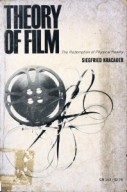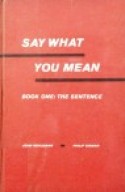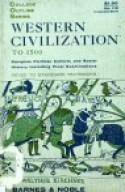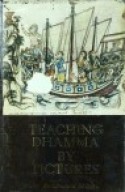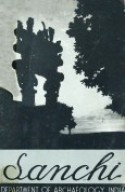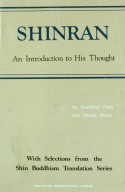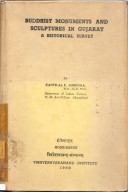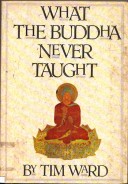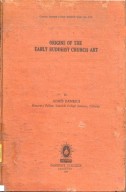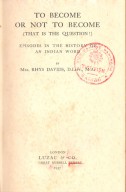Theory of film
Siegfried Kracauer
The Theory of Film
The Redemption of Physical Reality
Oxford University Press, London Oxford New York
CONTENTS
Introduction
- Photography 3
HISTORICAL SURVEY 4
Early view and trends 4
Current views and trends 8
SYSTEMATIC CONSIDERATIONS 12
The basic aesthetic principle 12
The photographic approach 13
Affinities 18
Appeals 21
The issue of art 22
- GENERAL CHARACTERISTICS
- Basie Concepts 27
PROPERTIES OF THE MEDIUM 28
THE TWO MAIN TENDENCIES 30
Lumière and Méliès 30
The realistic tendency 33
The formative tendency 35
Clashes, between the two tendencies 36
THE CINEMATIC APPROACH 37
THE ISSUE OF ART 39
- The Establishment of Physical Existence 41
RECORDING FUNCTIONS 41
Movement 41
Inanimate objects 45
REVEALING FUNCTIONS 46
Things normally unseen 46
Phenomena overwhelming consciousness 57
Special modes of reality 58
- Inherent Affinities 60
THE UNSTAGED 60
THE FORTUITOUS 62
ENDLESSNESS 63
24 consecutive hours 63
Routes of passage 64
THE INDETERMINATE 68
Psychophysical correspondences 68
A basic editing principle 69
THE “FLOW of life” 71
Once again the street 72
Stage interludes 73
- AREAS AND ELEMENTS
- History and Fantasy 77
HISTORY 77
Difficulties 77
Compromises 79
FANTASY 82
Scheme of analysis 83
Fantasy established in a stagy manner 84
Fantasy established by means of cinematic devices 87
Fantasy established in terms of physical reality 90
- Remarks on the Actor 93
QUALITIES 93
Emphasis on being 94
Casualness 95
Physique 95
FUNCTIONS 96
Object among objects 97
TYPES 98
The non-actor 98
The Hollywood star 99
The professional actor 100
- Dialogue and Sound 102
INTRODUCTION 102
Early misgivings 102
Basic requirement 103
DIALOGUE 104
The role of the spoken word 104
Manner of synchronization 111
SOUND PROPER 124
About the nature of sound 124
Reliance on symbolic meanings 125
Role 127
Manner of synchronization 128
- Music 133
PHYSIOLOGICAL FUNCTIONS 133
The archaic era 133
Music, imagery, and spectator 134
AESTHETIC FUNCTIONS 139
Commentative music 139
Actual music 144
Music as the nucleus of film 152
- The Spectator 157
EFFECTS 157
Impact on the senses 158
Lowered consciousness 139
Excursion: Propaganda and film 160
Dreaming 163
GRATIFICATIONS 166
Film and television 166
Hunger for life 167
The concept of life as such 169
Film—the “glistening wheel of life” 170
Child-like omnipotence 171
Return from the dreamland 171
- COMPOSITION
- Experimental film 175
INTRODUCTION: the two main film types 175
ORIGINS 177
The avant-garde movement 177
Paradigmatic character of the avant-garde 178
AVANT-GARDE INTENTIONS 178
The controversial story 178
Cinematic language 179
Physical reality 180
“The least realistic of arts” 181
AVANT-GARDE TRENDS 182
Entr’acte 182
Emphasis on rhythm 183
Emphasis on content 187
Conclusions 192
- The Film of Fact 193
INTRODUCTION 193
Genres 193
Characteristics 193
Scope of investigation 194
THE FILM ON ART 195
Gain in three-dimensional naturalness 195
The experimental trend 196
The documentary trend 199
DOCUMENTARY 201
Concern about material reality 201
Indifference to material reality 206
Re-emergence of the story 211
- The Theatrical Story 215
INTRODUCTION 215
Form and content 215
An uncinematic story form 216
ORIGINS AND SOURCES 216
CHARACTERISTICS 218
Emphasis on human interaction 218
Complex units 219
Detachable patterns of meanings 220
A whole with a purpose 221
ATTEMPTS AT ADJUSTMENT 222
The “most marvelous things” 222
Two alternatives 225
CONCLUSIONS 230
Insoluble dilemma 230
- W. Griffith’s admirable nonsolution 231
- Interlude: Film and Novel 232
SIMILARITIES 232
Like film, the novel tends to render life in its fullness 232
Like film, the novel aspires to endlessness 233
DIFFERENCES 234
Formal properties 234
Two worlds 237
ABOUT ADAPTATIONS FROM NOVELS 239
Difference in cinematic quality 239
The content of novels 239
Cinematic adaptations 240
Uncinèmatic adaptations 242
- The found Story and the Episode 245
THE FOUND STORY 245
Definitions 245
Types 246
THE EPISODE 251
Definitions 251
Types 252
Structure 254
A framing device 260
- Matters of Content 262
THREE ASPECTS OF CONTENT 262
UNCINEMATIC CONTENT 263
Conceptual reasoning 263
The tragic 265
CINEMATIC CONTENT 270
Subject matter 270
Motifs 272
EPILOGUE
- Film in Our Time 285
PRIMACY OF INNER LIFE? 285
THE INTELLECTUAL LANDSCAPE 287
“Ruins of ancient beliefs” 287
Vistas 288
Highways through the void 291
Challenge 294
EXPERIENCE AND ITS MATERIAL 296
“Radiance of the sunset” 296
Reality within reach 297
Physical reality as the domain of film 298
THE REDEMPTION OF PHYSICAL REALITY 300
Art with a difference 300
Moments of everyday life 303
Material evidence 304
From bottom to top 308
“The Family of Man” 309
Notes 313
Bibliography 339
Index 331
PREFACE
It would be fair to advise the reader at the outset that this book does not include all the things he may be looking for. It neglects the animated cartoon and avoids broaching problems of color. Certain recent developments and extensions of the medium are left undiscussed also. There are doubtless still other omissions; indeed, some of the topics which loom large in most writings on film have either been relegated to the background or completely dropped. But the reader himself will not be slow in discovering these gaps, if gaps they are.
What then does the book deal with? Its exclusive concern is the normal black-and-white film, as it grows out of photography. The reason I confine myself to it is rather obvious: Film being a very complex medium, the best method of getting at its core is to disregard, at least temporarily, its less essential ingredients and varieties. I have adopted throughout this sensible procedure. And by the way, is the ground thus covered really so limited? From Lumière’s first film strips to Fellini’s Cabiria, from The Birth of a Nation to Aparajito, and from Potemkin to Paisan, practically all important cinematic statements have been made in black and white and within the traditional format.
In sum, my book is intended to afford insight into the intrinsic nature of photographic film. If it halfway serves the purpose, as I dare hope it does, it must of course apply to all elements and derivatives of the medium. So one might all the more argue that, in the interest of completeness, I should have brought to bear my theory also on color, the wide screen, television, and what not. Now note that color, for example, involves numerous issues which cannot be apprehended in a cursory manner. To mention one such issue, experience shows that, contrary to what should be expected, natural colors, as recorded by the camera, tend to weaken rather than increase the realistic effect which black-and-white movies are able to produce. The wide screen too raises many a question which requires special treatment. On the one hand, these subsidiary matters undoubtedly “belong”; on the other, they invite inquiries which, perhaps, are too heavy a burden for a book centering on the basic characteristics of film. Evidently, I am caught in a dilemma. Or rather, I would be caught in it did Ỉ not feel strongly against rushing through places which ought to be dwelt m. It is my considered opinion that color and other related subjects had better be discussed separately, why indeed should one say everything at the same time?
At this point I might as well anticipate another possible objection. Perhaps the reader will wonder why, in substantiating my views, I do not limit myself to the testimony of current films which still stand out in his memory, but refer him so often to movies he has long since forgotten or never heard of. This old stuff, he may maintain, is very difficult to check, not to mention that it is probably outmoded in various ways. In consequence, he is likely to question the validity, or the range of validity, of many of my arguments and conclusions. Would they not offer greater interest, I hear him ask, if they were mainly derived from contemporary achievements?
I believe this line of reasoning to be fallacious. Even had I kept my material completely up to date, yet I would still be accused of relying on outdated examples within a few years. What is the talk of the town today will have sunk into oblivion tomorrow; the cinema voraciously devours its own children. Nor can it be said that the most recent films always represent the last word of film making. We know, alas, that technical innovations need not involve advances in design and execution; and the battle scenes in D. w. Griffith’s The Birth of a Nation—a film dating as far back as 1915—have never been matched, let alone surpassed.
In addition, too strong an emphasis on modem practices would have been incompatible with my objectives. Since I aim at tracing the peculiar properties of the medium, I naturally depend, for supporting evidence, on a sample selected from among films of a periods. Hence my constant recourse to a random mixture of old and new instances. Frequently the seeming new is nothing but a variation of old models. AD meaningful close-ups originate with After Many Years (1908), in which D. W. Griffith initiated their use for dramatic effect. Similarly, present-day experimental films contain little that cannot be found in the French avant-garde films of the ’twenties. In any such case I preferred to stick to the prototypes which, more vividly than an that follows, still vibrate with the intentions engendering them.
For the rest, these old pictures have by no means disappeared. Regular access to them is had in the film libraries of New York, Paris, London, and elsewhere; also, scattered movie houses occasionally cultivate revivals or resort to them as stopgaps. If there were more such opportunities, people would he less inclined to mistake for a “new wave” what is actually an old story—which is not to say, of course, that new waves do not rise from time to timer think of the neorealistic movement in postwar Italy.
As for my approach to film, I shall certainly not attempt to outline it in advance. Yet I feel I should at least point here to some of its distinguishing features so that prospective readers will get a rough idea of what IS awaiting them. My book differs from most writings in the field in that it is a material aesthetics, not a formal one. It is concerned with content. It rests upon the assumption that film is essentially an extension of photography and therefore shares with this medium a marked affinity for the visible world around US. Films come into their own when they record and reveal physical reality. Now this reality includes many phenomena which would hardly be perceived were it not for the motion picture camera’s ability to catch them on the wing. And since any medium is partial to the things it is uniquely equipped to render, the cinema is conceivably animated by a desire to picture transient material life, life at its most ephemeral. Street crowds, involuntary gestures, and other fleeting impressions are its very meat. Significantly, the contemporaries of Lumière praised his films—the first ever to be made—for showing “the ripple of the leaves stirred by the wind.”
I assume, then, that films are true to the medium to the extent that they penetrate the world before our eyes. This assumption—the premise and axis of my book—gives rise to numerous questions. For instance, how is it possible for films to revive events of the past or project fantasies and yet retain a cinematic quality? What about the role of the sound track? If films are to confront US with our visible environment, a good deal obviously depends upon the manner in which the spoken word, noises, and music are related to the pictures. A third question bears on the character of the narrative: Are all types of stories indiscriminately amenable to cinematic treatment or are some such types more in keeping with the spirit of the medium than the rest of them? In answering these and other questions, I am bringing out the implications of my assumption about the photographic nature of film.
It is two different things to espouse an idea and to realize, let alone endorse, all that is implied by it. Even though the reader will presumably agree that the cinema is engrossed in the physical side of life in and about us, he may not be prepared to acknowledge certain consequences of its preoccupation with externals. Consider the issue of story types: a majority of people take for granted that everything that can be staged in the theater or told in a novel can also be conveyed in terms of the cinema. Given a purely formal approach to film, this is a quite sensible expectation. Hence the widespread opinion that tragedy is not only as accessible to the screen as any other literary genre but belongs among the noblest pursuits of the medium—those raising it to the level of an art medium.
Accordingly, culture-minded moviegoers tend to prefer, say, Orson Welles’s Othello or Renato Castellani’s Romeo and Juliet to the crudeness of a Hitchcock thriller. No doubt these two adaptations represent ingenious attempts to translate Shakespearean tragedy into cinematic language. But are they films in the sense that they would make one see and grasp things which only the cinema is privileged to communicate? Decidedly not. While admiring them, the spectator cannot help feeling that the stories which they impart do not grow out of the material life they picture but are imposed on its potentially coherent fabric from without. Even with these products of consummate craftsmanship the tragic is an addition rather than an integral element.
I submit that film and tragedy are incompatible with each other. This proposition, impossible to a formal aesthetics, follows straight from my initial assumption. If film is a photographic medium, it must gravitate toward the expanses of outer reality—an open-ended, limitless world which bears little resemblance to the finite and ordered cosmos set by tragedy. Unlike this cosmos, where destiny defeats chance and all the light falls on human interaction, the world of film is a flow of random events involving both humans and inanimate objects. Nor can the tragic be evoked by images of that flow; it is an exclusively mental experience which has no correspondences in camera-reality…
I should also like to mention here that all implications of my emphasis on the photographic nature of film converge toward the issue of art. Once you start from the assumption that the cinema retains major characteristics of photography, you will find it impossible to accept the widely sanctioned belief or claim that film is an art like the traditional arts. Works of art consume the raw material from which they are drawn, whereas films as an outgrowth of camera work are bound to exhibit it. However purposefully directed, the motion picture camera would cease to be a camera if it did not record visible phenomena for their own sake. It fulfills itself in rendering the “ripple of the leaves.” If film is an art, it is art with a difference. Along with photography, film is the only art which leaves its raw material more or less intact. In consequence, such art as goes into films results from their creators’ capacity to read the book of nature. The film artist has traits of an imaginative reader, or an explorer prompted by insatiable curiosity.
All this means that films ding to the surface of things. They seem to be the more cinematic, the less they focus directly on inward life, ideology, and spiritual concerns. This explains why many people with strong cultural leanings scorn the cinema. They are afraid lest its undeniable penchant for externals might tempt us to neglect our highest aspirations in the kaleidoscopic sights of ephemeral outward appearances. The cinema, says Valéry, diverts the spectator from the core of his being.
Plausible as this verdict sounds, it strikes me as unhistorical and superficial because it fails to do justice to the human condition in our time. Perhaps our condition is such that we cannot gain access to the elusive essentials of life unless we assimilate the seemingly non-essential? Perhaps the way today leads from, and through, the corporeal to the spiritual? And perhaps the cinema helps US to move from “below” to “above?” It is indeed my contention that film, our contemporary, has a definite bearing on the era into which it is born; that it meets our inmost needs precisely by exposing—for the first time, as it were—outer reality and thus deepening, in Gabriel Marcel’s words, our relation to “this Earth which is our habitat.”
These few hints will have to do, for there is no short cut to the observations and thoughts on which my contention is based. I have tried to unfold them in the last chapter, which both completes and transcends the preceding aesthetic considerations. In fact, it reaches far beyond film proper. Just as, throughout the book, numbers of movies are analyzed with a view to exemplifying various points of my theory, so, in this chapter, the cinema itself is set in the perspective of something more general— an approach to the world, a mode of human existence.
Let me conclude with a personal reminiscence. I was still a young boy when I saw my first film. The impression it made upon me must have been intoxicating, for I there and then determined to commit my experience to writing. To the best of my recollection, this was my earliest literary project. Whether it ever materialized, I have forgotten. But I have not forgotten its long-winded title, which, back home from the movie house, I immediately put on a shred of paper. Film as the Discoverer of the Marvels of Everyday Life, the title mad. And I remember, as if it were today, the marvels themselves. What thrilled me so deeply was an ordinary suburban street, filled with lights and shadows which transfigured It Several trees stood about and there was in the foreground a puddle reflecting invisible house facades and a piece of the sky. Then a breeze moved the shadows, and the facades with the sky below began to waver. The trembling upper world in the dirty puddle—this image has never left me.
Siegfried Kracauer
June 1960 New York City
 Facebook
Facebook
 Google
Google
 Google+
Google+
